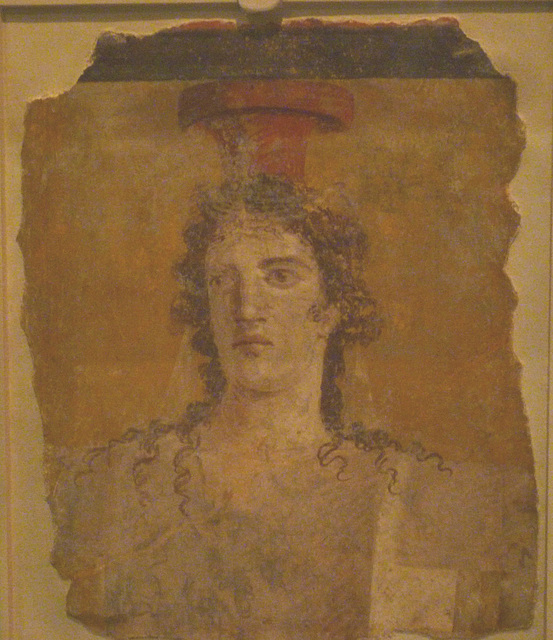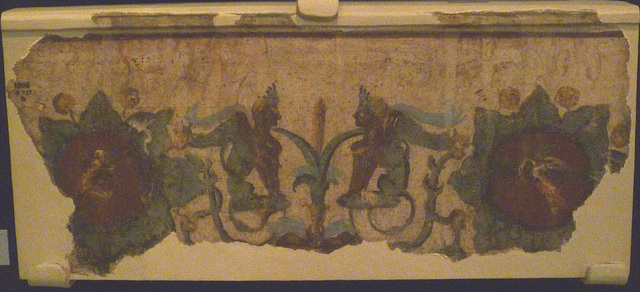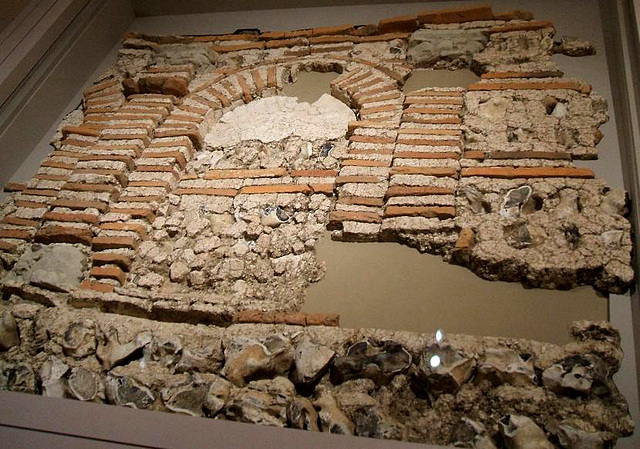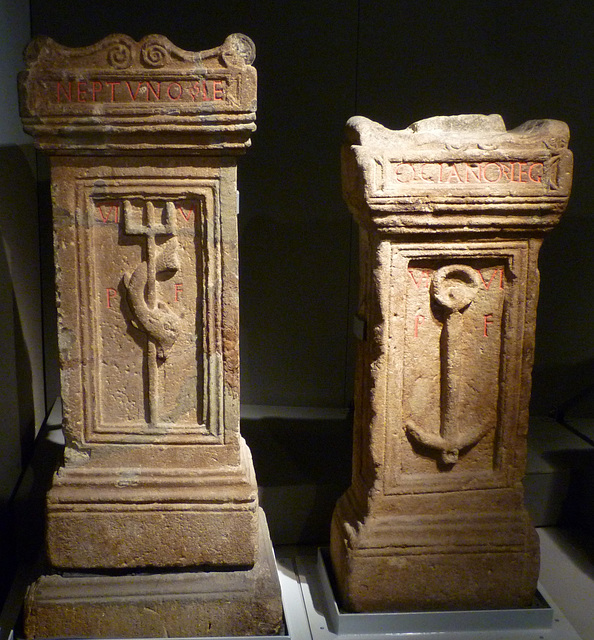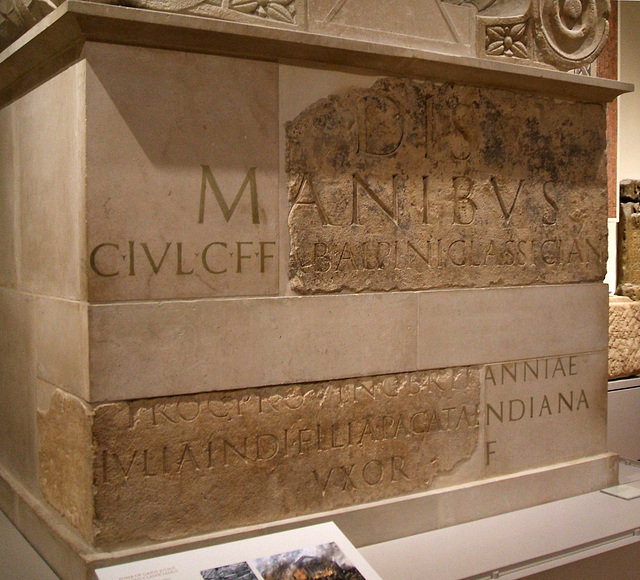
Roman Large Finds
Folder: Roman Empire
Large finds from around Europe including statues, tombstones, altars, frescos and mosaics.
10 Oct 2007
Bank of England Mosaic
3rd century AD
Found under the Bank of England, London
This floor of a small square room was the first Romano-British mosaic acquired by the British Museum, in 1806, about a year after its discovery. It lay around 3.5 metres underground under the north-west corner of the Bank of England site in the City of London.
In the British Museum.
October 2007.
09 Jun 2015
Wall Painting
From Nero's Domus Aurea in Rome.
AD 54-68.
From the 'Roman Empire - Power and People' exhibition, Segedunum Roman Fort, North East England.
09 Jun 2015
Wall Painting
From Nero's Domus Aurea in Rome.
AD 54-68.
From the 'Roman Empire - Power and People' exhibition, Segedunum Roman Fort, North East England.
09 Dec 2007
1 favorite
1 comment
Meonstoke Roman Villa
This is a section of the façade of an aisled barn-like building on a villa estate in the parish of Meonstoke, Hampshire. It was excavated by King Alfred's College, Winchester and lifted by The British Museum in 1989. The façade was constructed in the early fourth century AD. We know that it collapsed some time after AD 353, as that is the latest date of the coins found underneath.
In the British Museum.
December 2007.
17 Nov 2014
1 favorite
Altars
These two altars were found in the River Tyne where the Roman bridge (Pons Aelius) crossed the river.Both are thinner than most altars because they came from a shrine on the bridge itself. One is dedicated to the river god Neptune and shows his trident, the other is to the sea god Oceanus and shows an anchor. Both altars were dedicated to the sixth legion.
Great North Museum, Newcastle-upon-Tyne, England.
17 Nov 2014
Mithraic Altars
These are the original altars from the Mithraic Temple at Carrawburgh on Hadrian's Wall.
Great North Museum, Newcastle-upon-Tyne, England.
15 Oct 2008
Roman Tombstone
This is the reconstructed tombstone of Gaius Julius Alpinus Classicianus. His name shows him to have been a member of the Gallic aristocracy, but we know more about him from the Roman historian Tacitus (Annals XIV 38-39), an unusual instance where we can link a documented person to a burial monument. Nero (reigned AD 54-68) appointed Classsicianus as the procurator (finance minister) of Britain after the revolt of the Iceni led by Queen Boudica in AD 60-61. His job was to correct the financial abuses that had been an important cause of the rebellion.
In late Roman times (fourth century AD), pieces of the tombstone were re-used in the hurried construction of one of the bastions that protected the walls of Roman London. The first surviving pieces came to light in 1852; further sections were discovered in 1885, when an underground railway was cut through the site, and in 1935.
DIS [M]ANIBVS [C(AI) IVL(I) C(AI) F(ILI) F]AB(IATRIBV) ALPINI CLASSICIANI PROC(VRATORIS) PROVINC(IAE) BRIT[ANNIAE] IVLIA INDI FILIA PACATA I[NDIANA] VXOR [F(ECIT)]
To the spirit of the departed Gaius Julius, son of Gaius, of the Fabian voting tribe, Alpinus Classicianus … procurator of the province of Britannia. Julia Pacata, daughter of Indus, I…, his wife set this up.
(RIB 12).
In the British Museum.
October 2008.
Jump to top
RSS feed- Latest items - Subscribe to the latest items added to this album
- ipernity © 2007-2025
- Help & Contact
|
Club news
|
About ipernity
|
History |
ipernity Club & Prices |
Guide of good conduct
Donate | Group guidelines | Privacy policy | Terms of use | Statutes | In memoria -
Facebook
Twitter



